Argentina OKs Transfer Of Venezuelan Plane To US Amid Strife With Iran
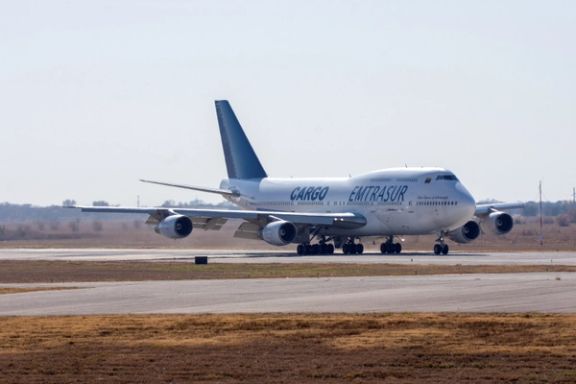
An Argentine court has given the green light for the transfer of a Venezuelan plane to US authorities amid legal wranglings with Iran.

An Argentine court has given the green light for the transfer of a Venezuelan plane to US authorities amid legal wranglings with Iran.
The Boeing 747 cargo plane, belonging to Venezuela's Emtrasur, has been detained in Argentina since June 2022. The plane was purchased by Emtrasur, a subsidiary of state airline Conviasa, from Iran's Mahan Air in October 2021, violating US sanctions against both countries.
Caracas and Tehran objected to US efforts to seize the plane, seeking support from Argentina. On Wednesday, Judge Federico Villena directed its surrender to the United States, a decision denounced by Venezuela as "robbery," according to the justice ministry.
In June 2022, Argentine lawmaker Gerardo Milman alleged that Iranians on the Venezuelan plane were plotting "attacks on human targets." Iran meanwhile claimed the plane wasn't owned by an Iranian company but Milman accused the pilot of being a "senior official of Qods (Quds) force," listed as a terrorist organization by the United States.
The 19-member crew, consisting of Venezuelans and Iranians, initially faced detention, with the US suspecting one member's ties to the IRGC Quds Force, designated a terrorist organization. Although all crew members were initially detained, they were later released.
In September 2022, the pilot claimed he was only a flight instructor and denied ties to the Iranian military, but had served as a volunteer in the Iran-Iraq War (1980-1988) with the Basij Popular Mobilization Forces.
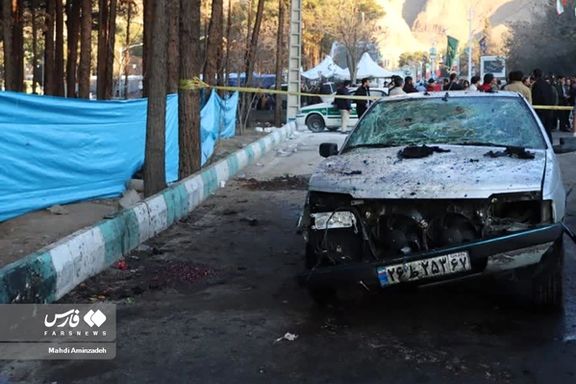
Islamic State group claimed responsibility on Thursday for the twin explosions that rocked a memorial ceremony in Kerman, Iran, killing nearly 100 people.
The attack targeted a gathering commemorating the former IRGC's Middle East operative, Gen. Qasem Soleimani, who was killed by a US drone in 2020, killing as many as 94 people and injuring 284.
The extremist group took responsibility for the attack through a statement posted on its affiliated Telegram channels, and published a video showing the blurred images of two alleged suicide bombers.
According to the IRNA state news agency, an official confirmed that a male suicide bomber had been seen through surveillance footage at Kerman's cemetery during the memorial.
The second explosion according to the official is suspected to have been carried out by a separate suicide bomber, though it has not been confirmed.
Iranian officials earlier blamed Israel and the United States for the bombing. Israel has ignored the accusation while Washington has dismissed it. Tehran, which often claims ISIS was created by the US, might still continue to point fingers at Washington, at least for its domestic audience.
Iranian dissidents, however, have blamed the Iranian regime for having had a role in the attack as a way of garnering support from a disgruntled populace.
Initially reporting 103 casualties, officials later revised the count downward, citing duplicate names on the victim list and the severity of injuries sustained by some. Despite adjustments, a considerable number of wounded individuals remain in critical condition, heightening concerns of a potential rise in the death toll.

Iran's Supreme National Security Council held an emergency session on Thursday to “expedite efforts to arrest and prosecute” those responsible for the Kerman attack.
The twin blasts on Wednesday resulted in numerous casualties near the grave of IRGC commander Qasem Soleimani during the ceremony commemorating the fourth anniversary of his death.
The explosions, reported by Iranian state television, occurred at the cemetery in Kerman where the 2020 killing of the top IRGC commander was being commemorated.
During the emergency session, the Supreme National Security Council urged intelligence agencies to “promptly follow leads and identify the individuals behind the incident.” The Council aimed for “swift identification and punishment of those accountable for the event.”
As reported by the state news agency IRNA, the session also underscored the importance of “precisely identifying and reporting the role of the masterminds behind the attack”, amid allegations among Iranians that the attack was state backed. No state officials or members of the former Quds Force commander’s family attended the event, raising suspicions of regime involvement.
IRNA quoted the Council, stating, "The individuals, who consistently support terrorism and target innocent men, women, and children globally, will be held accountable for their involvement in this particular incident."
Additionally, the council revealed that relevant authorities have received directives to implement preventive measures against future acts of terrorism.
Interior Minister Ahmad Vahidi revised the death toll to 84, down from the initial reports of 103 and later 95. Additionally, Mizan, the Judiciary's news agency, has published a list indicating 32 fatalities and 284 injuries.

A politician in Iran says Reformists have offered ways out of the current political impasse to the President, such as delaying the upcoming parliamentary elections.
The managing editor of one of Iran's leading reformist newspapers, Elias Hazrati revealed on Wednesday that in their meeting with President Ebrahim Raisi on Monday the Reformists urged him to delay the elections and renew the registration of candidates.
Most Reformist political groups did not name any candidates and their members refused to register as they were sulking with the government following large-scale banning of non-conservative candidates in the previous two election in 2020 and 2021. As a result, both the parliament and the executive branch are dominated by hardliners, who appear eager to monopolize power.

Meanwhile, the Reformists called on the government to endorse the qualifications of a majority of the 24,000 candidates who have registered their candidacy.
The other two demands by reformists were more general and not necessarily linked to the elections. They called on Raisi to take prompt measures to solve the country's long-standing economic problems and to promote the status of the parliament (Majles). During recent years the government has side-lined the parliament and most key decisions, such as increasing the price of fuel, were made by the heads of the three government branches.
Hazrati pointed out that some reformist figures did not take part in the meeting with Raisi and some others, including Reform Front leader Azar Mansouri were not invited. In all, some 50 Reformist and conservative figures were invited and half of them were given the opportunity to speak during the meeting. Most of the Reformists who spoke at the meeting, explained their views about improving political participation.
The government remained silent about what was discussed at the meeting and the President's Office's news dissemination chief Mohammad Hassan Najmi announced on Wednesday that "Raisi did a favor to political activists to allow them to take part in a meeting with him."
According to Hazrati, some of the conservative figures such Paydari Party leader Sadeq Mahsouli's behavior at the meeting was confrontational and he and some others were trying to change the discussions to factional infighting. He also observed that Raisi himself mainly talked about his expectations from the media to promote the "government's achievements."
He said the main problem with the meeting was that it took place when the disqualifications of reformist candidates have been completed and apparently there is nothing that can be done to avert a political debacle. The final result of the vetting is likely to be announced during the coming week.
The move by hardliners to block others from parliament is expected to turn the election into a low-turnout event.
Despite the grievances partly discussed by Hazrati, Iran's Reformists appear to settle for an arrangement that would give them the opportunity to form a small minority at the parliament.
A report on Rouydad24 website which called the next election "a loss for the reform camp," not only suggested the formation of "an influential reformist minority" at the Majles, but also briefly introduced 20 reformist figure who could be the members of the Reformist Fraction at the Iranian parliament.
The list of the imaginary faction members include former vice President Mohammad Bagher Nobakht, former lawmaker and government's critic Ali Motahari, Massoud Pezeshkian whom the website called "The senator from Tabriz" after Supreme Leader Ali Khamenei criticized the Interior Ministry for barring him from running, and former lawmaker Mostafa Kavakebian the leader of a small reformist party called Mardom Salari (Democracy).
Interestingly, the qualifications of 12 of the 20- candidates suggested for membership in the Reform Fraction have been already rejected by the Interior Ministry.
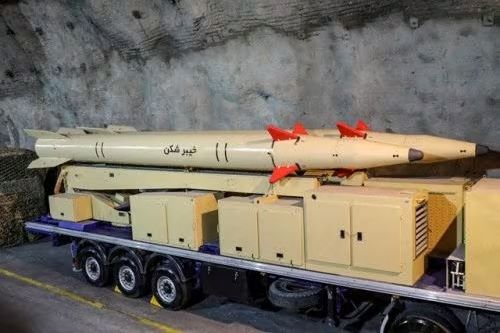
Moscow intends to purchase short-range ballistic missiles from the Islamic Republic, according to The Wall Street Journal.
The ongoing military talks between the two countries have caused concern among US government officials as Iran’s possible delivery of missiles to Russia can further improve Moscow’s capabilities in its war against Ukraine.
“The United States is concerned that Russian negotiations to acquire close-range ballistic missiles from Iran are actively advancing,” The Wall Street Journal quoted a US official as saying.
The deal between Tehran and Moscow has not been sealed yet, the report added, noting that in case of its finalization, the Iranian missiles might be delivered to Russia in the coming months.
The revelations come while it came to light that North Korea supplied Russia with dozens of ballistic missiles and several ballistic missile launchers.
The Islamic Republic has been one of the staunch allies of Russia in its war against Ukraine. Since mid-2022, Iran has supplied a substantial number of kamikaze Unmanned Aerial Vehicles (UAVs) to Russia, which have been extensively deployed to target civilian infrastructure and cities in Ukraine.
Despite Iran’s denials regarding its involvement in supplying drones and other weaponry to Russia, the United States and its NATO allies have imposed a series of sanctions on individuals and entities implicated in the drone shipments.
In December, US National Security spokesman John Kirby emphasized that Washington will continue to hold Tehran and Moscow accountable for their growing military ties.
Referring to Iran’s military assistance to Russia and extremist militant groups in the Middle East, Kirby warned that the burgeoning relationship between Tehran and Moscow “is not only not good for the Ukrainian people but it’s certainly not good for the region.”
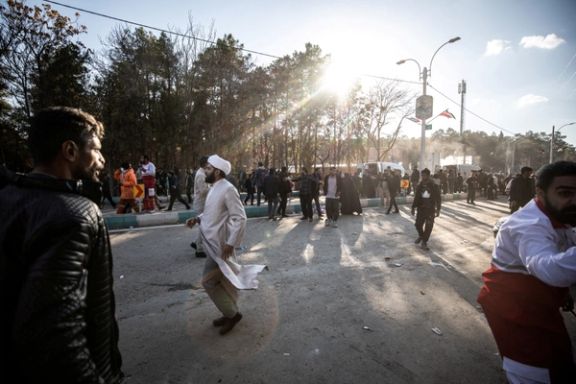
Seeking a scapegoat for a deadly bombing on Wednesday, Iran has turned to its old foes Israel and the US, but the Iranian public is not so easily fooled.
While both Israel and the US have carried out targeted assassinations and attacks on Iran's military and nuclear facilities, the two have never committed such an attack in built-up populations and with potential civilians, unlike Islamist groups such as the Islamic State group and Al Qaeda, which have.
But Iranians, who have been victims of violent suppression since the 2022 uprising and long before, have begun to look closer to home. In the wake of the Women, Life, Freedom protests, over 550 Iranians were brutally murdered, with no implications from the regime to rein in its security forces.
Thousands of Iranians on social media have claimed the attack was organized by the Islamic Republic itself in an attempt to further its domestic and foreign policies.
They cite the absence of Soleimani’s family members and high-ranking political and military officials in Kerman at Qasem Soleimani's tomb during the incident marking the fourth anniversary of the proxy leader's death, suggesting an indication of the regime’s complicity.
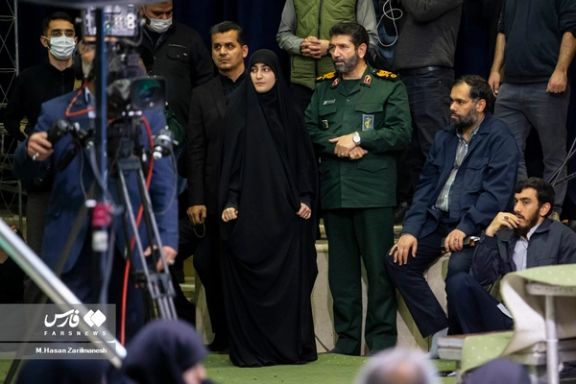
On Wednesday, prominent Iranian dissident Masih Alinejad wrote on X: “Why were Qasem Soleimani’s children absent from their father’s funeral? … As the regime blames Israel and America, Iranians hold the Islamic regime leaders accountable for this deadly attack, recalling the regime’s history of crimes against their people.”
In the usual regime rhetoric, Mohammad Movahedi-Azad, Iran’s Attorney General, held responsible “the global arrogance led by the US and Israel” for the attacks which have so far claimed the lives of 84 people.
Esmail Qaani, the head of IRGC Qods Force, vowed revenge against the “bloodthirsty criminals” who launched the attack, adding that they were “fed by the US and Zionists.”
Reiterating a similar stance, Gholamreza Soleimani, the commander of Basij militias, said CIA and Mossad are “behind the scene” of the blasts.
But history tells a different story. There have been numerous reports about the Islamic Republic’s involvement in “terrorist attacks” carried out previously in Iran. Five years ago, Mostafa Tajzadeh, a former government official, admitted that the Iranian regime had a role to play in the explosions in Imam Reza’s shrine in Mashhad in 1994.
Iranians have accused the regime of planning the attacks on Shahcheragh shrine, another religious site, in Shiraz last year, following the national uprising in 2022, claiming it was a desperate attempt on the part of the Islamic Republic to frighten the protesters and mobilize its supporters via appropriating religious sentiments.
US State Department spokesman Matthew Miller strongly rejected the allegation regarding Washington’s involvement in the attack: “The United States was not involved in any way, and any suggestion to the contrary is ridiculous.”
“We have no reason to believe that Israel was involved in this explosion,” he went on to say.
The attack had the hallmarks of one of the region's Islamist groups such as Islamic State or Al Qaeda though none has yet claimed responsibility.
It is familiar rhetoric for Iranians who are well versed in the propaganda churned out by Tehran, using the US and Israel as easy fall guys for actions perpetrated if not by their own security apparatus, then by other militias.